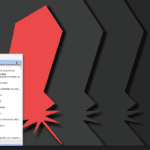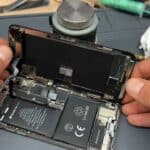Windows users sometimes encounter the frustrating “Something happened and your PIN isn’t available” error when attempting to log in. This issue often occurs after system updates or due to file corruption. The error prevents access to user accounts and can be caused by malware infections, system file issues, or permission errors disrupting the PIN login feature.
Fixing this problem typically involves troubleshooting steps like resetting Windows or using recovery options. Users may need to access the Windows Recovery environment by holding Shift and clicking the restart button on the lock screen. From there, they can navigate to advanced options and troubleshooting tools to address the PIN availability issue.
For those unable to reach the lock screen, restarting the PC twice during the boot process can also bring up recovery options. These methods aim to restore PIN functionality and regain access to user accounts without data loss.

“Something Happened and Your PIN Isn’t Available” in Windows 11: Troubleshooting Guide
Windows 11 offers PIN login as a convenient and secure way to access your device. However, sometimes you might encounter the frustrating message “Something happened and your PIN isn’t available.” This can prevent you from logging in and accessing your files. But don’t worry, there are several solutions you can try:
1. Restart Your Computer
Often, a simple restart can resolve temporary glitches or errors that might be causing the PIN issue.
2. Troubleshoot Your PIN
- Click the “Set up your PIN again” link: This will guide you through the PIN reset process. You’ll need to enter your Microsoft account password to verify your identity.
- If that fails, click “I forgot my PIN” instead: Follow the prompts to reset your PIN using alternative methods like security questions or a verification code sent to your phone or email.
3. Check for Windows Updates
Sometimes, outdated system files can cause conflicts with the PIN login feature.
- Go to Settings > Windows Update.
- Download and install any available updates.
4. Check Your TPM Settings
The Trusted Platform Module (TPM) is a security chip that stores encryption keys and other sensitive data, including PIN information.
- Search for “TPM” in the Windows search bar and open “Security Processor Troubleshooting.”
- Check the status of your TPM. If it’s not ready or has an error, follow the troubleshooting steps provided.
5. Run System File Checker (SFC)
The SFC tool can scan for and repair corrupted system files that might be causing the PIN problem.
- Open Command Prompt as administrator.
- Type “sfc /scannow” and press Enter.
- Wait for the scan to complete and follow any instructions provided.
6. Create a New User Account
If other solutions fail, creating a new user account can sometimes bypass the PIN issue.
- Go to Settings > Accounts > Family & other users.
- Click “Add someone else to this PC” and follow the prompts.
| Troubleshooting Step | Description |
|---|---|
| Restart your computer | Resolves temporary glitches |
| Troubleshoot your PIN | Reset your PIN using available options |
| Check for Windows Updates | Install the latest updates |
| Check TPM settings | Ensure TPM is functioning correctly |
| Run SFC scan | Repair corrupted system files |
| Create a new user account | Bypass PIN issue with a new account |
Additional Tips
- If you’re using a work or school device, contact your IT administrator for assistance. They may have specific security policies or settings that affect PIN login.
- Ensure your Microsoft account password is up-to-date. You’ll need it to reset your PIN or troubleshoot TPM issues.
- If you suspect malware might be causing the problem, run a full system scan with your antivirus software.
Windows Hello: Facial Recognition and Fingerprint Login
Windows Hello offers alternative login methods like facial recognition and fingerprint scanning. These methods can be more convenient and secure than a PIN. If your device supports Windows Hello, consider setting it up as a backup login option.
Key Takeaways
- PIN unavailability can stem from system updates, file corruption, or malware
- Windows Recovery environment offers tools to troubleshoot and fix PIN issues
- Multiple restart attempts may be necessary to access recovery options if the lock screen is inaccessible
Understanding the PIN Availability Issue
The “Something happened and your PIN isn’t available” error can disrupt Windows sign-in processes. This issue affects Windows Hello functionality and may stem from various system problems.
Exploring the Error Message
The error message typically appears on the Windows login screen. It prevents users from accessing their accounts using their PIN. This problem can occur on both Windows 10 and Windows 11 systems.
Users may see additional details like error code 0xc000006d. This code often indicates a system file corruption or issues with the Trusted Platform Module (TPM).
The error forces users to rely on alternative sign-in methods, such as their account password.
Common Causes of Sign-in Problems
Several factors can trigger PIN unavailability:
- Corrupted system files
- TPM malfunctions
- Outdated Windows versions
- Damaged NGC folder
System updates or recent changes to security settings may also cause this issue. In some cases, the problem stems from conflicts with other Windows Hello features.
Hardware issues, particularly with devices that use biometric authentication, can contribute to PIN problems. Faulty fingerprint readers or cameras may disrupt the entire Windows Hello system.
Occasionally, the error results from account synchronization problems, especially for Microsoft accounts used across multiple devices.
Resolving PIN Issues and Recovery Options
PIN-related problems can be frustrating, but several solutions exist to regain access to your Windows account. These methods range from simple resets to advanced troubleshooting techniques.
Reset or Recover Your PIN
To reset your Windows Hello PIN, go to Settings > Accounts > Sign-in options. Select the “I forgot my PIN” link under the PIN section. Enter your Microsoft account password when prompted. Follow the on-screen instructions to create a new PIN.
If you use a local account, click “Reset PIN” instead. You’ll need to provide your current password to verify your identity. Then, set up a new PIN as directed.
For users encountering the “Something happened and your PIN isn’t available” error, removing and re-adding the PIN often resolves the issue. In Settings, go to Accounts > Sign-in options, select PIN, and choose “Remove.” After removal, set up a new PIN.
Alternative Sign-in Methods
When PIN sign-in fails, other options can help you access your account. The password method is the most reliable alternative. On the login screen, select “Sign-in options” and choose the key icon for password entry.
For Microsoft accounts, you can use the Microsoft Authenticator app. Set it up in advance through your account settings online. This app generates one-time codes for sign-in.
Windows Hello face or fingerprint recognition offers another way to bypass PIN issues. Enable these in Settings > Accounts > Sign-in options if your device supports them.
Advanced Troubleshooting Techniques
Start Windows in Safe Mode to isolate PIN problems. Restart your PC and press F8 repeatedly before Windows loads. Choose “Safe Mode” from the boot options menu.
Use System Restore to revert Windows to a state before the PIN issue occurred. Access it through Advanced Startup options or by typing “Create a restore point” in the Start menu search.
If PIN problems persist, run the Windows built-in troubleshooter. Search for “troubleshoot” in the Start menu and select “Troubleshoot settings.” Look for “Windows Hello” or “Sign-in” options.
Check if recent Windows updates caused the issue. Uninstall recent updates through Settings > Windows Update > View update history > Uninstall updates.
Post-Recovery Actions
After regaining access, take steps to prevent future PIN issues. Ensure Windows is up-to-date by checking for and installing the latest updates in Settings > Windows Update.
Create a password reset disk for local accounts as a backup. Insert a USB drive and search for “Create a password reset disk” in the Start menu to set it up.
Consider enabling additional sign-in methods like fingerprint or face recognition for redundancy. This provides more options if one method fails in the future.
Regularly back up important files to avoid data loss during account access problems. Use File Explorer to copy files to an external drive or cloud storage service.
Frequently Asked Questions
Windows users may encounter PIN-related issues when trying to sign in. These problems can stem from various causes and have different solutions depending on the specific situation.
How can I resolve the ‘Something happened and your PIN isn’t available’ error on Windows?
To fix this error, users can try removing and setting up their PIN again. Go to Settings > Accounts > Sign-in options. Expand the PIN section and select “Remove.” Confirm the action and enter your account password. After removal, set up a new PIN to regain access.
What are the steps to reset my PIN when I get the message that it’s not available on Windows 10?
First, click on the error message to initiate the PIN setup process. If prompted to download an app from the Microsoft Store, ensure you have an internet connection. If the download doesn’t start, try accessing the Microsoft Store directly and search for the required app.
How do I bypass the PIN error to log in to my Windows 11 system?
If unable to use your PIN, try signing in with your Microsoft account password. If that fails, restart your computer in Safe Mode. From there, you can access settings to remove or reset your PIN, or use System Restore to revert to a point when the PIN was working.
Why am I getting a PIN error when trying to sign in to Windows with no internet connection?
PIN errors may occur without internet if the system can’t verify your credentials. Ensure your device has connected to the internet recently to sync account information. If the problem persists, try signing in with your local account password instead of the PIN.
Is there a way to fix the PIN issue without a Microsoft account on a Windows device?
For local accounts, resetting the PIN is possible through the Settings app. Navigate to Accounts > Sign-in options and select “I forgot my PIN” under the PIN section. You’ll need to verify your current password to set up a new PIN.
What should I do if I encounter a PIN problem on my laptop after a Windows update?
After an update, PIN issues can arise due to system changes. Try restarting your computer first. If the problem continues, go to Settings > Accounts > Sign-in options and remove the existing PIN. Then set up a new PIN. If issues persist, consider rolling back the update or contacting Microsoft support.






